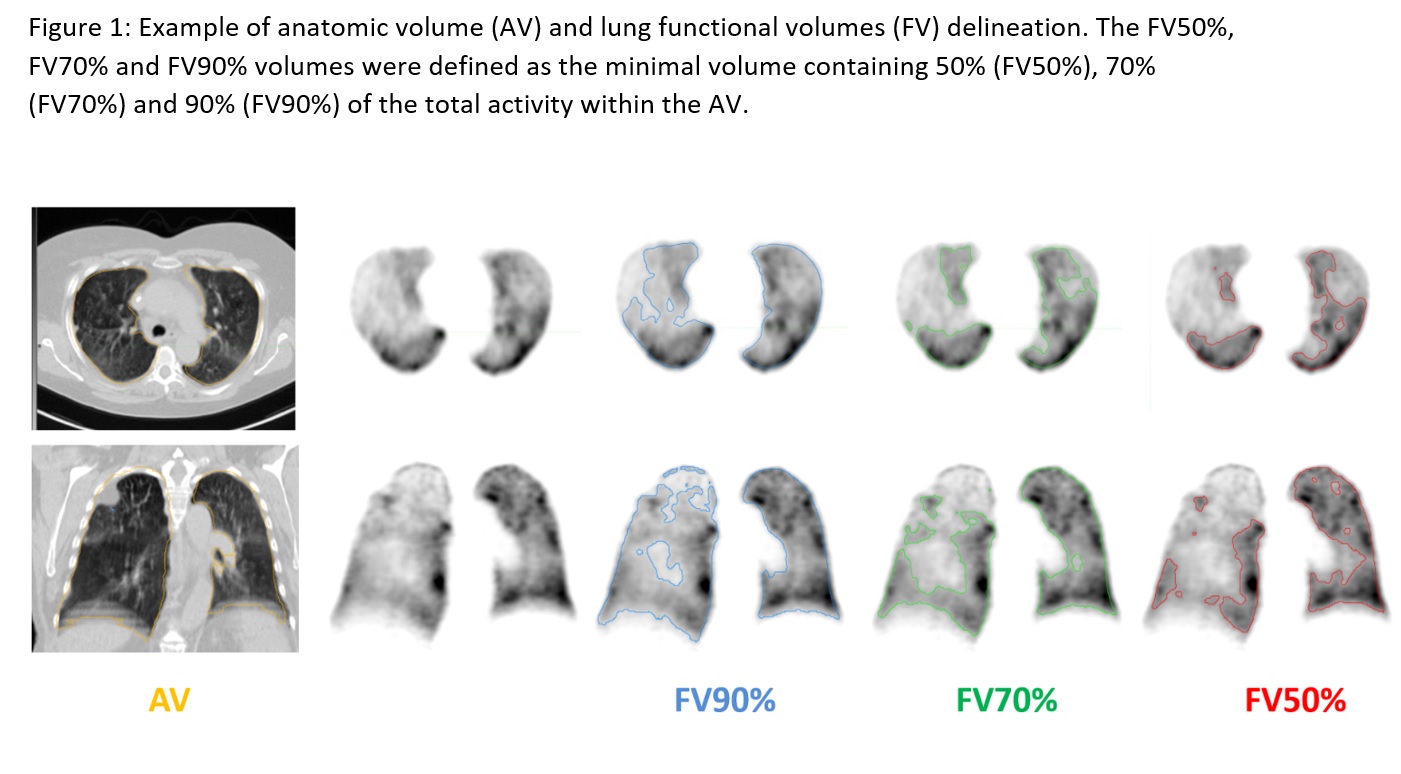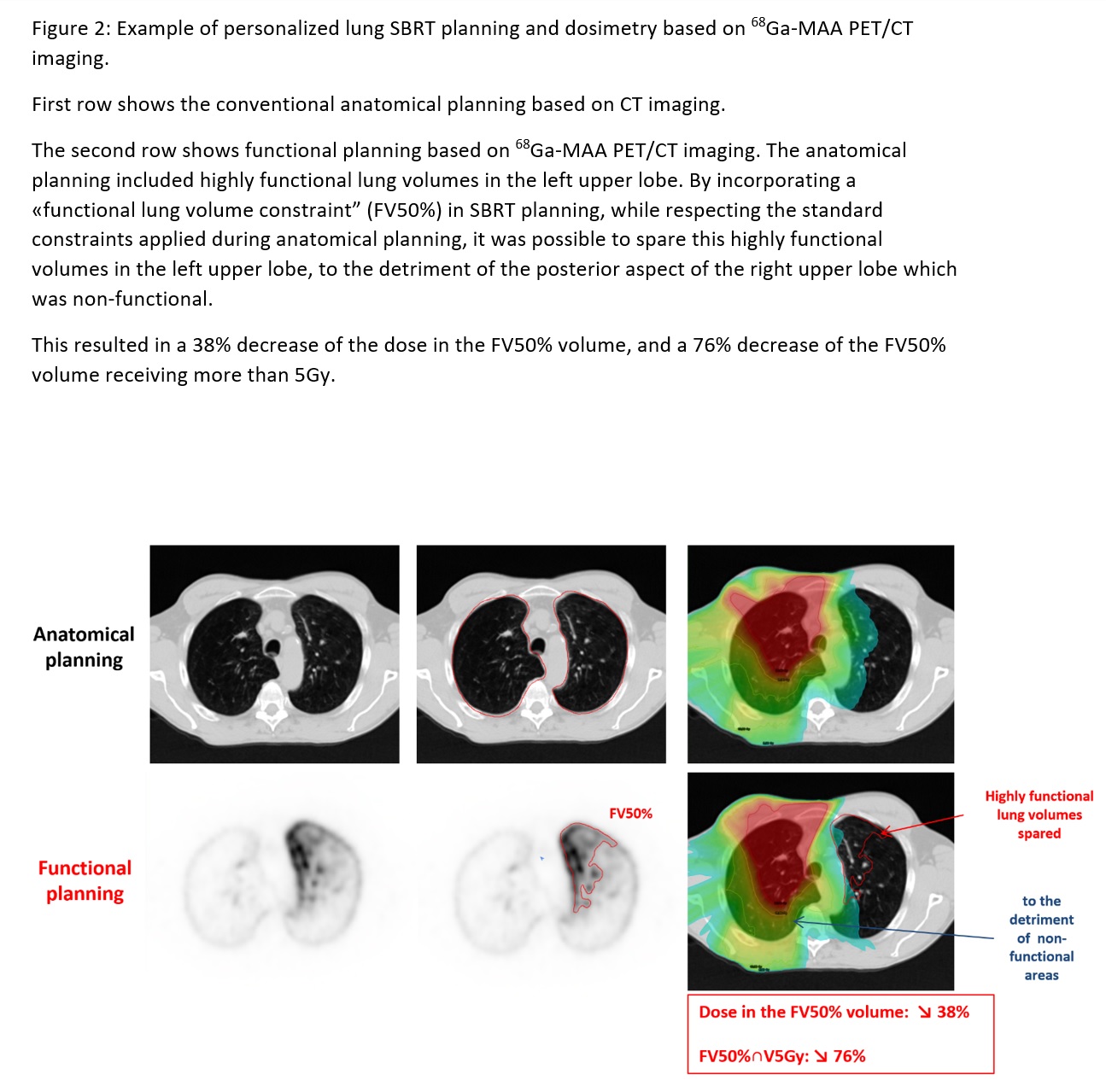Functional lung preservation during stereotactic body radiotherapy guided by perfusion PET/CT
MO-0226
Abstract
Functional lung preservation during stereotactic body radiotherapy guided by perfusion PET/CT
Authors: François Lucia1, Mohamed Hamya2, Fanny Pinot3, Gaelle Goasduff2, Frédérique Blanc-Béguin3, David Bourhis4, Olivier Pradier2, Anne-Sophie Lucia2, Simon Hennebicq3, Maelle Mauguen2, Romain Floch3, Ulrike Schick2, Vincent Bourbonne2, Pierre-Yves Salaun3, Pierre-Yves Le Roux3
1University Hospital, Brest, Radiation Oncology , Brest, France; 2University Hospital, Radiation Oncology, Brest, France; 3University Hospital, Nuclear Medicine, Brest, France; 4University Hospital, Nuclear Medicine, Brest, France
Show Affiliations
Hide Affiliations
Purpose or Objective
Stereotactic body radiation therapy (SBRT) has become a real alternative treatment for inoperable stage I-II non-small cell lung cancer and lung oligometastases with a high local tumor control rate. However, SBRT remains associated with significant pulmonary toxicity. The aim of this study was to assess the feasibility to spare functional lung areas by integration of pulmonary functional mapping guided by Gallium-68 perfusion PET/CT imaging in lung SBRT planification.
Material and Methods
We conducted a single-center prospective study. Patients planned to receive SBRT for primary of secondary lung tumors were eligible. All patients underwent a lung 68Ga perfusion PET/CT. Lung functional volumes were defined as the minimal volume containing 50% (FV50%), 70% (FV70%) and 90% (FV90%) of the total activity within the anatomical volume. All patients had a treatment planning carried out in 2 stages: an anatomical planning blinded to the PET results, then a functional planning, respecting the standard constraints, but also incorporating "lung functional volume" constraints. The mean lung dose (MLD) in functional volumes and the percentage of lung volumes receiving 5, 10, 15 and 20 Gy (VxGy) within the lung functional volumes using both plans were calculated and compared.

Results
60 patients were prospectively enrolled. SBRT planning optimized to spare lung functional regions led to a significant reduction (p<0.0001) of the MLD and V5 to V20 Gy in all functional volumes.
Median relative difference of the MLD in the FV50%, FV70% and FV90% was -7.98% (-43.00 to 1.17%), -7.07% (-34.26 to 1.23%) and -5.66% (-22.26 to 4.38%), respectively.
Median relative differences for VxGy ranged from -12.5% to -9.2% in the FV50%, -11.3% to -7.2% in the FV70%, -8.0% to -5.3% in the FV90%.

Conclusion
This study shows the feasibility of significantly decreasing the doses delivered to the lung functional volumes using 68Ga perfusion PET/CT without compromising target volume coverage and doses to other organs at risk.